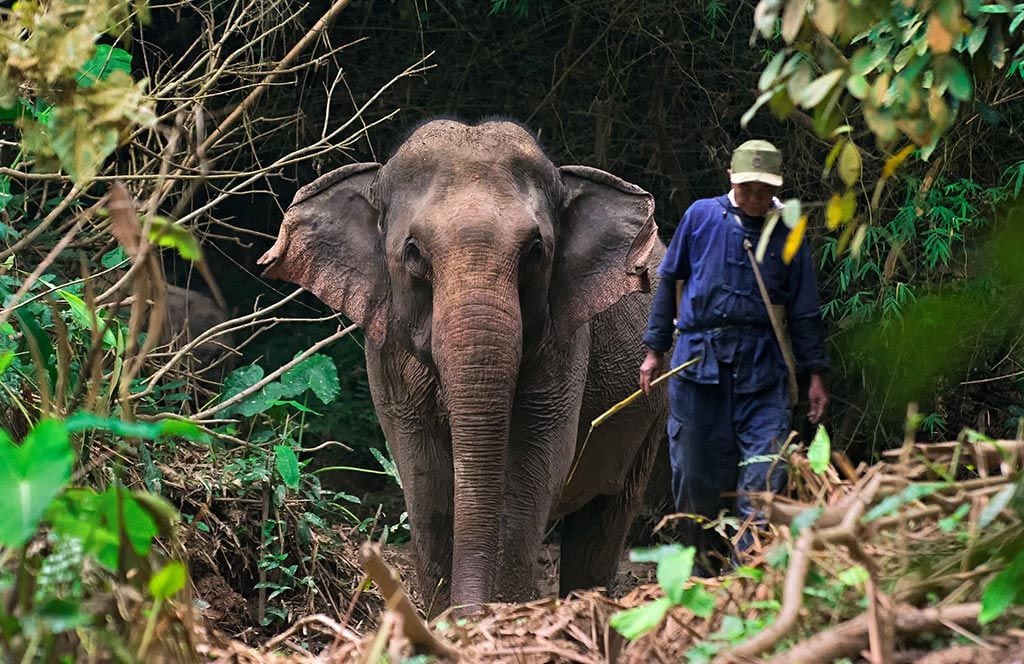The elephant is a large, but gentle animal. In fact, it represents the largest of land mammals in the world. An elephant can weigh as much as eight tons and is quite easily distinguished by its body size, long, rather floppy, ears, and long trunk. The trunk is used to alert other elephants, by sounding out trumpet-type warnings, or to pick up objects off the ground.
Two Types of Elephants
Two types of elephants predominate the jungles or rainforests of Africa and Asia, and are named for the continents in which they live. The Asian elephant, which is featured at an elephant conservation center in Thailand, is smaller than its African counterpart. While the African elephant displays large, fan-shaped ears, the Asian elephant’s ears are straight on the lower part of the ear.
Elephants Use Their Right Tusk or Left Tusk More Often
All the elephants in Africa have tusks, and are either right-tusked or left-tusked. The smaller tusk is usually the tusk the elephant uses more frequently. Only the male elephants in Asia have tusks. While the Asian elephant has five toes on its forefoot and four toes on the hind foot, the African elephant has five toes on the forefoot and three toes on the back foot.
The Female Elephants Prevail
When elephants range over an area, they are led by a mother elephant, thereby making them a matriarchal animal society. The male elephants in the wild usually live in isolation. One baby elephant or calf is born about every five years after a 22-month period – notably the longest of any mammal on earth. The calves stay close to their mothers for years, and are typically taken care of by other female elephants, too.
Staying Safe in a Natural Environment
To survive, both the African and Asian elephants need to roam over an open range. Because elephants consume a large amount of plant matter, they need a good deal of water, space, and food to survive. That is why conservationists in Asia and elsewhere are setting aside elephant sanctuaries – places where the animals can mingle around humans without the threat of being killed.
Surviving and Thriving in Today’s World
Today, poachers kill elephants for their tusks, or ivory, which is an illegal practice. That is why you need to become a participant in the animal’s survival. By visiting an elephant conservation site in Thailand, you can increase the chances that elephants will continue to survive and thrive.

A One-of-a-Kind Travel Experience
What makes a visit to an elephant sanctuary more interesting is when you read some facts online about elephants. While they may appear monstrously large in size, they are kind and trusting. That is why communing with the elephants is a one-of-a-kind travel experience.
A Bucket List Activity
You really cannot visit Thailand without visiting the elephants in a natural habitat. They have been placed in a lush and rain-forest locale where they will be safe and happy. You can make a difference in their life and your own life, too, when you book a time to visit with the elephants in Thailand. Add it to your bucket list and follow through today.



